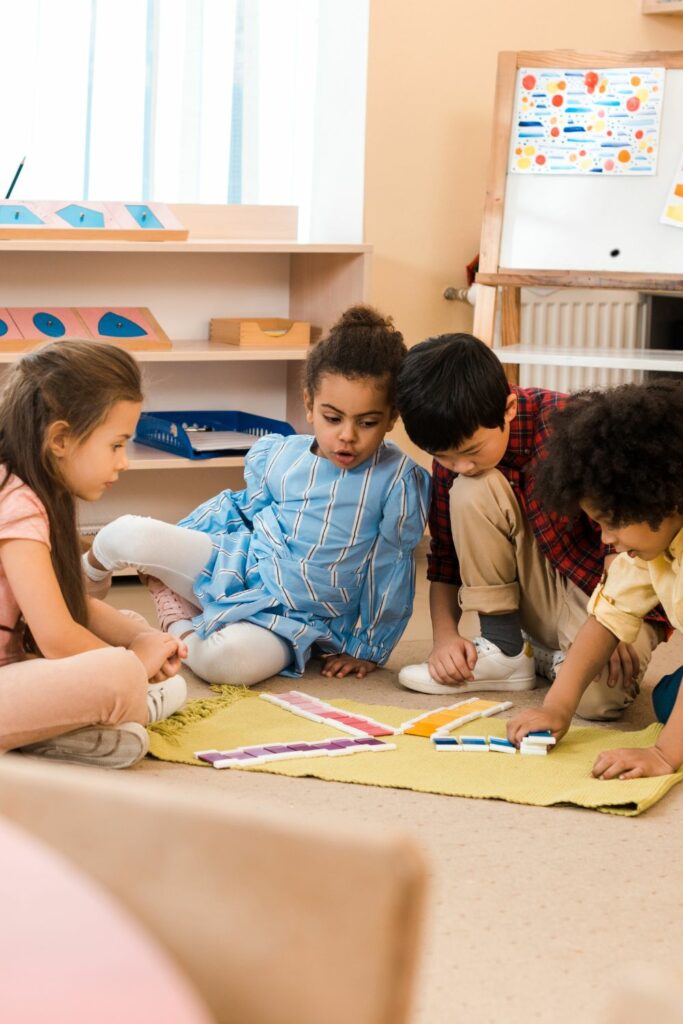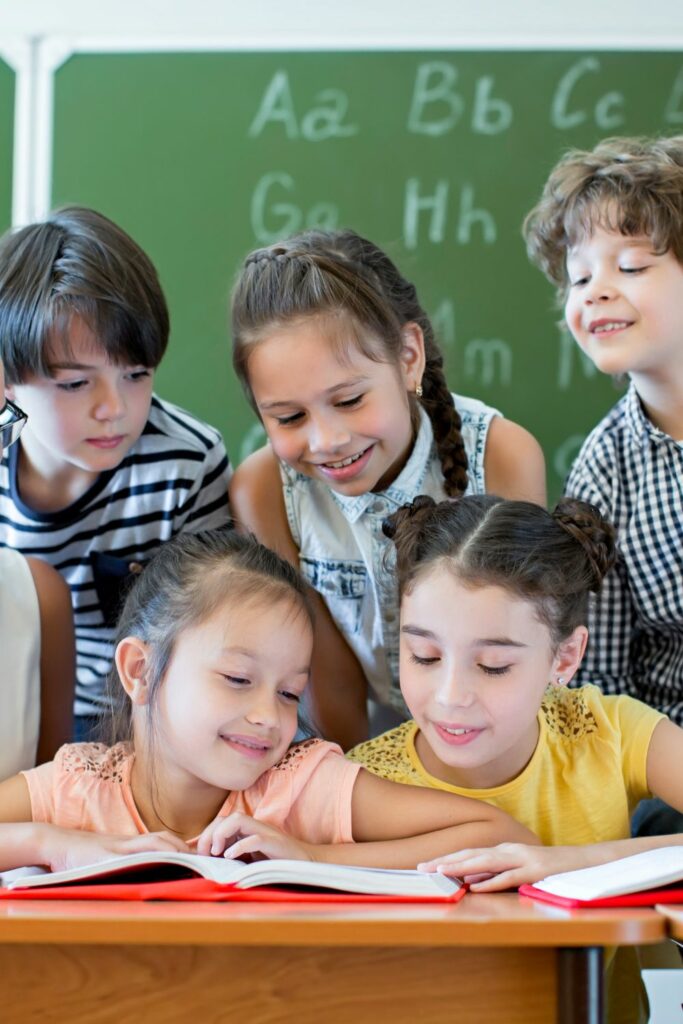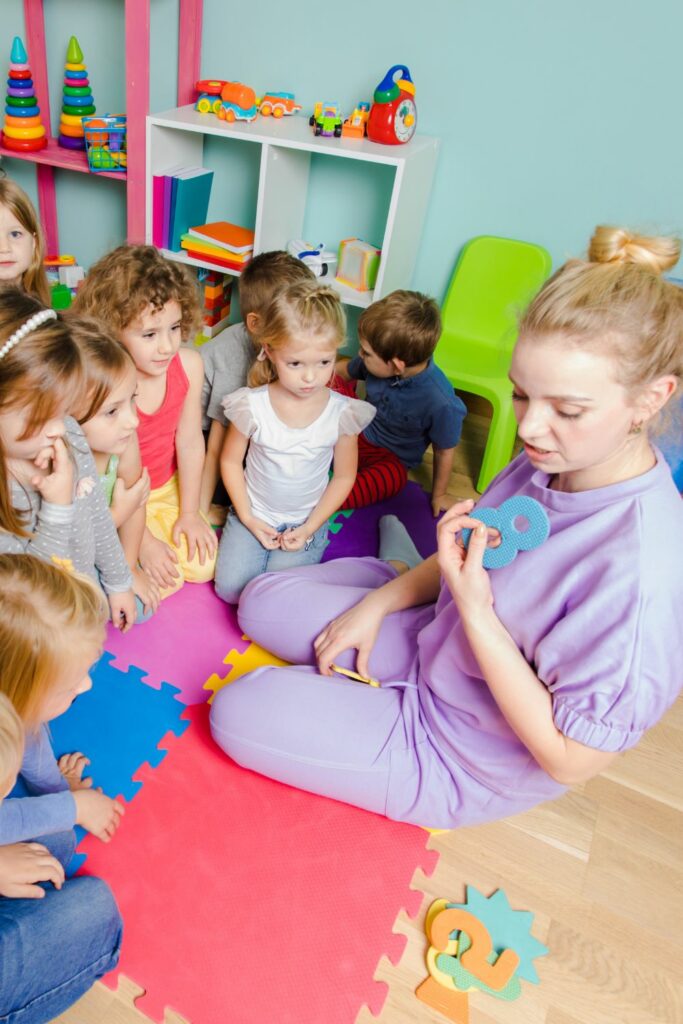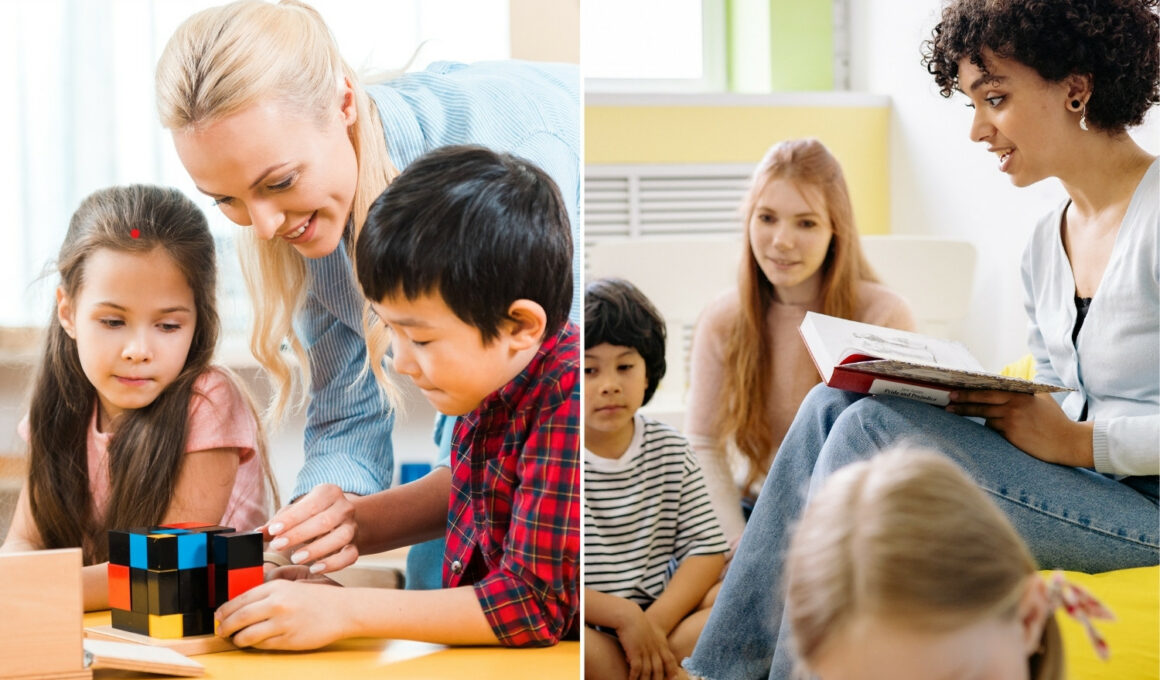In This Article Show
As a mother of three, I’ve navigated the winding path of parenting, from the first steps to the school gates and beyond. One of the most pivotal decisions we, as parents, face is selecting the right educational path for our children.
Montessori’s education, known for its unique approach to learning, emphasizes independence, freedom within limits, and respect for a child’s natural psychological development.
On the other hand, traditional education, often characterized by structured curriculums and teacher-led instructions, has its own set of merits and approaches to child development.
The choice between Montessori and traditional education systems isn’t just about schools; it’s about shaping our children’s future. In this blog, we will explore these two prominent education models, aiming to provide clear, comprehensive insights to help you make an informed decision for your child.
Understanding Montessori Education

Montessori education is a child-centered educational approach based on the scientific observations of Dr. Maria Montessori, an Italian physician and educator. Developed in the early 1900s, this approach marked a significant shift from traditional methods.
Dr. Montessori’s philosophy was rooted in the belief that children learn best through self-directed activity, hands-on learning, and collaborative play. Her method initially served underprivileged children in Rome and quickly gained global recognition for its effectiveness in fostering independent learning.
Great deals to snatch for your little ones 🎉
Understanding Traditional Education
Traditional education, often referred to as conventional education, is the most prevalent educational system across the globe. It is characterized by a teacher-centered approach, where educators are the primary source of knowledge and authority in the classroom.
This system, rooted in industrial-age values, is designed to impart a standardized curriculum to students through structured, often lecture-based methods. It typically follows a curriculum dictated by educational authorities and focuses on core subjects like math, science, language arts, and social studies.
Montessori vs. Traditional Education
1. Student-led vs. Teacher-led
Montessori (Student-led)
In Montessori schools, the learning approach is predominantly student-led. Children are encouraged to choose their activities based on their interests and are given the freedom to explore these activities at their own pace.
This approach fosters self-discipline, independence, and a love for self-directed learning.
Traditional Education (Teacher-led)
Traditional education models are largely teacher-led. In this setting, the teacher directs the learning process and decides what will be taught, when it will be taught, and how.
This structure ensures that all students cover the same material and learn to follow instructions and schedules.
2. Holistic Development vs. Standardized Test Preparation
Montessori (Holistic Development)
Montessori’s education focuses on the holistic development of the child. It not only addresses academic skills but also places a strong emphasis on social, emotional, physical, and creative development.
This approach aims to cultivate well-rounded individuals equipped with a broad range of life skills.
Traditional Education (Standardized Test Preparation)
The focus in traditional education systems is often on preparing students for standardized tests.
The curriculum is designed to cover specific academic content, and success is frequently measured by students’ performance on standardized assessments, which plays a crucial role in evaluating both student and school performance.
3. Collaborative vs. Structured
Montessori (Collaborative)
Montessori classrooms are designed to be collaborative environments. Children of different ages learn together, which fosters natural opportunities for peer teaching, learning, and social interaction.
The classroom is arranged with open spaces and group tables, emphasizing cooperative learning.
Traditional Education (Structured)

Traditional classrooms are more structured and organized with an emphasis on individual desks and a central teaching area. This setup reflects the teacher-centered approach, with less focus on student interaction during learning.
The environment is designed for focus and discipline, aligning with the structured nature of the curriculum and teaching methods.
Pros and Cons of Montessori and Traditional Education
Montessori Education
| Advantages | Disadvantages |
|---|---|
| Fosters Independence and Self-Discipline | Limited Availability and Higher Costs |
| Holistic Development | May Lack Structure for Some Students |
| Adapts to Individual Learning Styles | Varied Implementation |
| Encourages Curiosity and Lifelong Learning | Children who Transition to Traditional Schools may initially struggle with the change in teaching style. |
| Promotes Social Interaction and Collaboration |
Traditional Education
| Advantages | Disadvantages |
|---|---|
| Structured Learning Environment | Limited Focus on Individual Learning Styles |
| Focus on Core Academic Skills | Less Emphasis on Holistic Development |
| Widespread Availability | Reduced Self-Directed Learning Opportunities |
| Clear Evaluation and Progress Tracking | Potential Stress from Testing and Competition |
| Preparation for Conventional Testing Environments |
Understanding these pros and cons is crucial in making an informed decision about the most suitable educational path for a child, taking into account their individual needs, learning styles, and family circumstances.
Making the Right Choice for Your Child

Deciding between Montessori and traditional education for your child is a significant choice that can influence their learning journey. Here’s how to consider various factors and make an informed decision:
1. Child’s Learning Style
Assess whether your child thrives in a structured environment or prefers self-directed learning. Some children excel with the independence of Montessori, while others benefit from the structured approach of traditional education.
2. Family Values and Education Goals
Reflect on your family’s values and what you want your child to gain from their education. If holistic development and creativity are priorities, Montessori might be a better fit. If you value traditional academic achievement and standardized benchmarks, a conventional school might align more closely with your goals.
3. Child’s Social and Emotional Needs
Consider your child’s social skills and emotional maturity. Montessori’s education often promotes social interaction and emotional development, while traditional schools might provide a different form of social structure and support.
4. Adaptability to Different Environments
Think about how well your child adapts to new situations. Some children might find the transition between different educational styles challenging.
5. Special Educational Needs
If your child has special educational needs, assess which system offers better support and resources for those needs.
Ultimately, the choice between Montessori and traditional education should be based on a thorough understanding of your child’s personality, learning style, and needs, as well as your family’s values and goals.
Both educational paths offer unique benefits, and the right choice depends on which aligns best with what you envision for your child’s educational journey.













